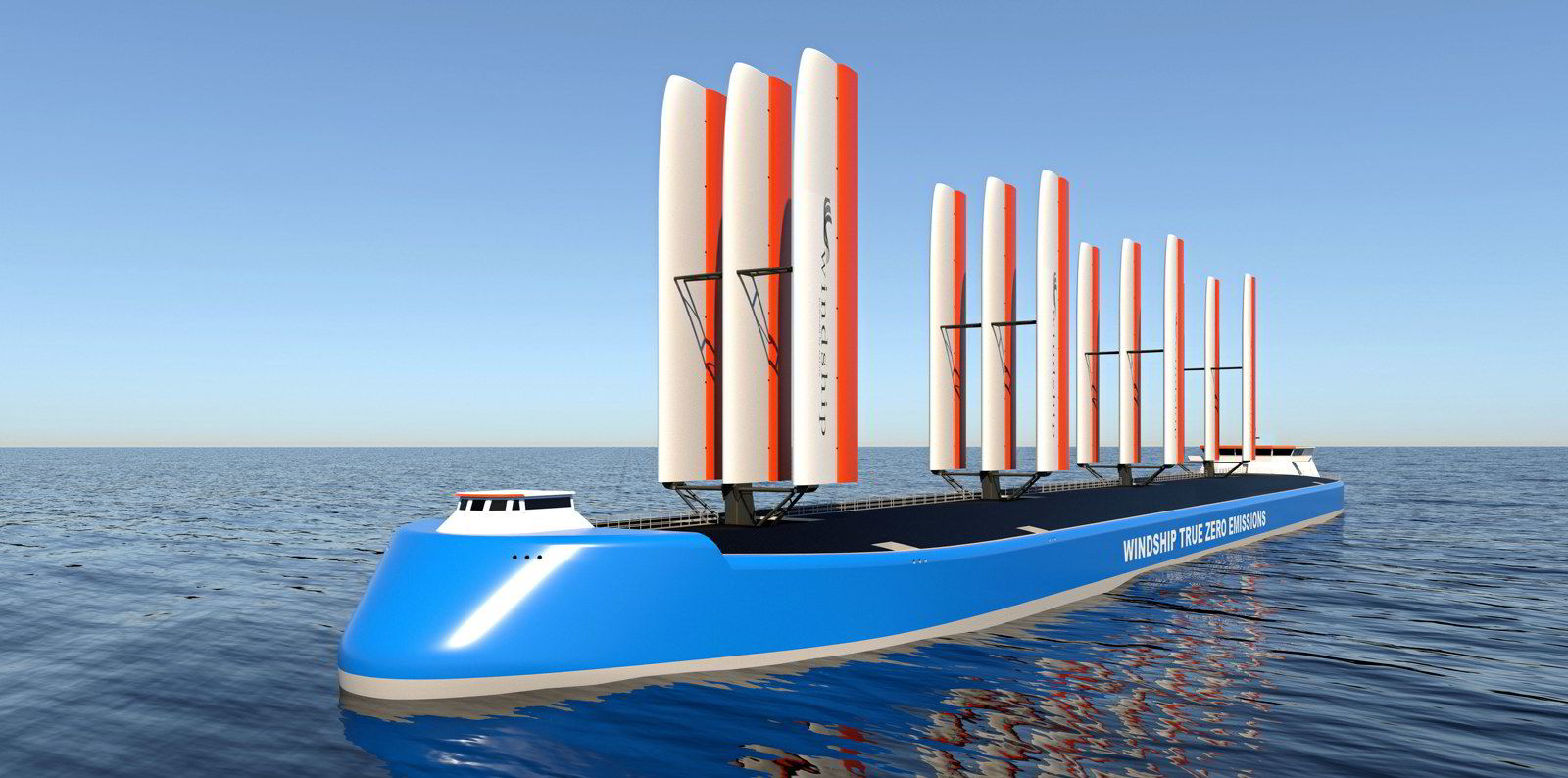Windship Technology, a UK firm with a background in yacht racing, has been developing triple-wing sails designed to cut fuel consumption by 30% for nearly a decade.
Under new chief executive Graham Harvey, it is raising investment to take its sails into prototype production and a fully zero-emission design incorporating solar power and carbon capture to market.
BAR Technologies’ tie-up with Cargill “shows that the market is waking up to the opportunities of wind power”, says Windship technical director Simon Rogers.
Windship’s approach has changed in the past three years. It previously focused on the sails, but concluded that “a holistic approach” was needed, combining sails with other clean-energy technologies and a diesel-electric drivetrain.
Computation fluid dynamics and wind tunnel testing have improved the performance of the wings, and construction techniques have been aligned with the wind turbine industry.
Windship will look for licensed builders as it moves towards manufacturing, reckoning the sails can be built in two to three days.
Weather routing simulation has promised a 42% reduction in thrust required for a 115,000-dwt diesel-electric ship fitted with three 48-metre-high rigs, Rogers claims. This is in full load and ballast through all seasons in the North Atlantic.
The same ship could sail 100% on wind power in 25-knot winds at the best angle, he adds.
Solar panels with a capacity of 2MW can provide 10% of the vessel’s total power requirement, with every cut in fuel consumption making it easier for a carbon capture system to deal with emissions.
To complete the set-up for a newbuilding, Windship has patented a modular design for a diesel-electric drivetrain that can provide a flexible range of engine revolutions.
Bringing the fuel burn down is crucial to cutting emissions to zero, Rogers says. And it does not require reinventing the wheel.
Using a standard modern engine, the four-stroke Wartsila 9L20, means the vessel would currently burn marine gasoil but could use alternative fuels such as ammonia in the future.
Modular generators mean engines could be swapped if required, allowing ships to be upgraded rather than scrapped.
“The system future-proofs for the full life of a ship by creating a true zero option that eliminates the CO2, the NOx, the SOx and the particulate matter,” Rogers says.
DNV approval in principle will soon be issued for the drivetrain, he hopes, and hazard assessments have been done on the sails.
Windship aims to build two of the sail rigs on land in the next two years before installation on a ship, to ensure lessons are learned prior to testing on a retrofit.
One owner is looking at 10-15 ships, according to Rogers, and he believes others will build or retrofit on the back of long-term charters. “We are at an absolute tipping point.”






